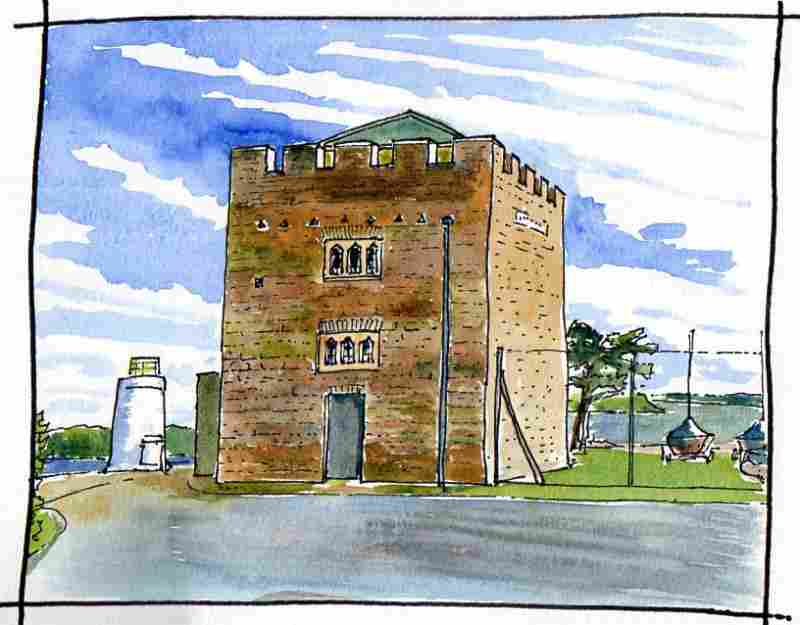Completing the tour, a final tower house. This one is back at the River Foyle, on Culmore point where the river expands into the lough. This structure is considered to be largely a nineteenth century folly to provide interest to the view from nearby Ballnagard House but it may be a rebuild or repair of an O'Doherty tower known to have been here in 1556. The site, however, was heavily refortified by the English from 1600 and this may also be a remnant... of one of the structures built at this time. In the trees about half a mile away from this site the earthen defences created by the English as part of their fortification of the site can still be seen. This was the first landing point of Sir Henry Dowcra in 1600. He was sent with an army to attach the rear of O'Neill and O'Donnell as part of the Nine Years War. After fortifying this site he moved upstream to Derry and then to Dunnalong and Lifford, where he also created forts.
|
|
|


